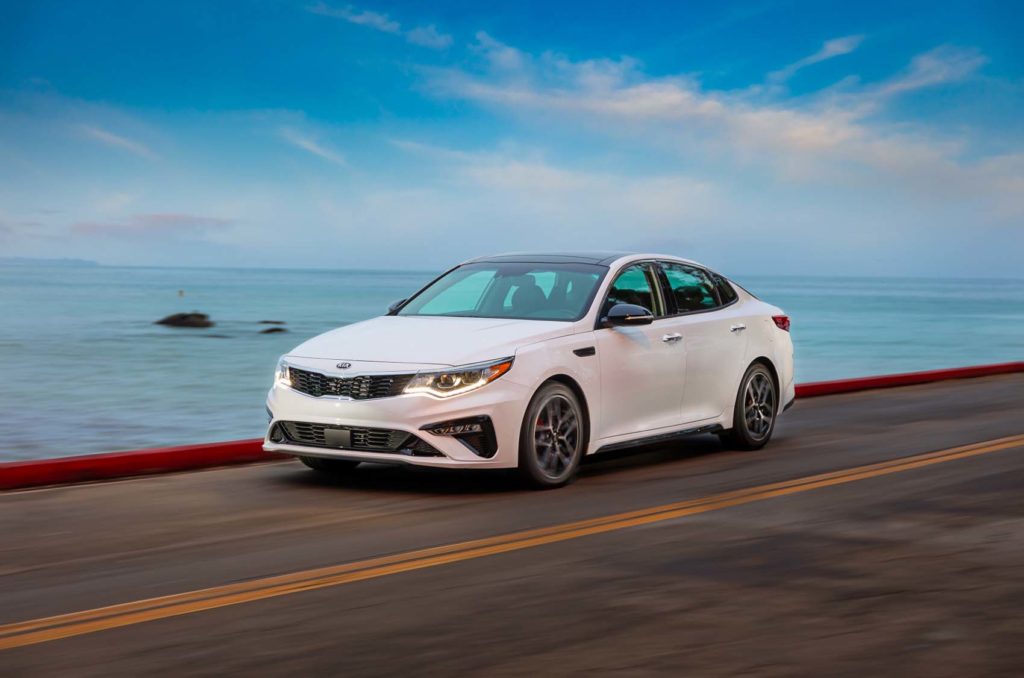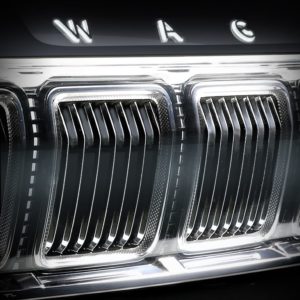The front grille is likely to influence your first impression of any vehicle. Located on the front end of a car, SUV, truck, or van, the grille assembly is often the first part that enters your line of sight.
Auto manufacturers put a lot of effort into creating front grille designs that catch the eye and linger in the mind. Some designs become synonymous with their brand, while others fail to live up to their creators’ expectations. Let’s take a look at some of the most famous car grille designs and determine what makes them so iconic.
BMW Kidney Front Grille

Few car grille designs are as recognizable as the kidney grilles that adorn the front end of many Bayerische Motoren Werke (BMW) vehicles. They first appeared on the BMW 303 in 1933, putting a subtle and unique spin on the prevalent radiator grille design where a center bar split the grille into two.
BMW rounded the upper and lower ends of the radiator grilles. The resulting oval shapes not only set the BMW 303 front grilles apart from other designs but also made the vehicle’s front sleeker for better aerodynamic efficiency. The company then set its distinct emblem in between the upper arches to complete the sculpture-like effect.
Save for a few exceptions, the BMW front grille design grew narrower over the years until it took on the familiar kidney-shaped look. By the 1990s, BMW began experimenting with its iconic front grille design.
Chevrolet Dual-Port Grille

While BMW split its front grille design vertically, Chevrolet went for a horizontal approach. Its dual-port grille is divided between a thin upper front grille and a taller lower grille. The golden cross-shaped Chevy emblem sits on the accent bar between the grilles in the same way a bowtie adorns a formal suit.
Some Chevy models like the 2014 Impala move away from dual-port grilles by switching to single-port grilles. However, the classic grille continues to show up on the latest Chevrolet models.

Jeep 7-Slot Grille
A Jeep isn’t considered a proper representative of the brand unless its front end features a front grille with seven vertical slots. But did you know that the very first Jeep did not have this?
The famous Willys MB is the ancestor of the Jeep Wrangler. Designed by Willys-Overland for the US Army, its original radiator grille featured a welded flat iron slat that looked nothing like the one we know today.

Moreover, there were actually three Jeep models to begin with. The original design came from American Bantam and was copied by its competitors Willys and Ford. One of the changes Ford introduced to its GPW was a familiar vertical-slot front grille. The Ford-designed front grille featured nine slots and was made of stamped steel.
Willys copied many of the Ford GPW’s design features, including the vertical-slot front grille. After WW2 ended, Willys reduced the number of slots from nine to the iconic seven to avoid accusations from Ford about copying the design. The company succeeded in securing a trademark for their vertical-slot front grille, and it adorned the front of the Willys CJ (Civilian Jeep) and later models.
The seven-slot front grille also appeared on the Humvee after AM General acquired Willys. Meanwhile, Ford continued to produce jeeps for the US military but used a horizontal-slot front grille to circumvent Willys’ trademark. Other manufacturers also took inspiration from the Jeep’s distinctive front grille. One notable example is the Suzuki Jimmy, whose early models also featured vertical slots in their front grilles.
Kia Tiger Nose Grille

When Peter Schreyer left BMW in 2007 to take up the task of designing vehicles for Kia, he sought to come up with concepts that looked strong and grabbed people’s attention. It so happened that a designer in the company’s Seoul studio noticed how the front grille of a Kia concept car looked like a tiger’s nose. Schreyer’s team ran with this idea and came up with the tiger nose grille, a design that evokes the angular features of the world’s largest living feline.
The exact appearance of the tiger nose grille varies between Kia models. Some models have softer lines on their grilles, while others have sharper, more aggressive angles. But all Kia tiger nose front grilles share the same double indents at their top and bottom. The tabs in the chrome grille’s middle invoke the illusion of reduced height. The result is almost as recognizable as the BMW kidney grille.
Lexus Spindle Grille

Lexus needed something to set it apart from juggernaut brands like its parent company Toyota or the Big Three. It took the first step in that direction by applying the L-finesse design language to all its models starting in 2005. Following the new philosophy, the Lexus GS featured a front grille with a trapezoid-shaped upper half. This led to the first iteration of the spindle grille on the 2011 Lexus CT 200h.
The hourglass shape of the Lexus spindle grille invokes the hand loom spindles that Toyota started with in the early 20th century. At first glance, it’s easy to think that the entire Lexus front grille is a single frame. But a closer look will reveal that the grille has two separate apertures that are cleverly positioned to give the illusion of being a single piece.
The lower aperture is bigger than the upper one to increase the air flowing through the engine. Each part is precisely and artfully placed to ensure that the grille hides the contents of the engine compartment from whatever angle you look at.
Any information provided on this Website is for informational purposes only and is not intended to replace consultation with a professional mechanic. The accuracy and timeliness of the information may change from the time of publication.
















